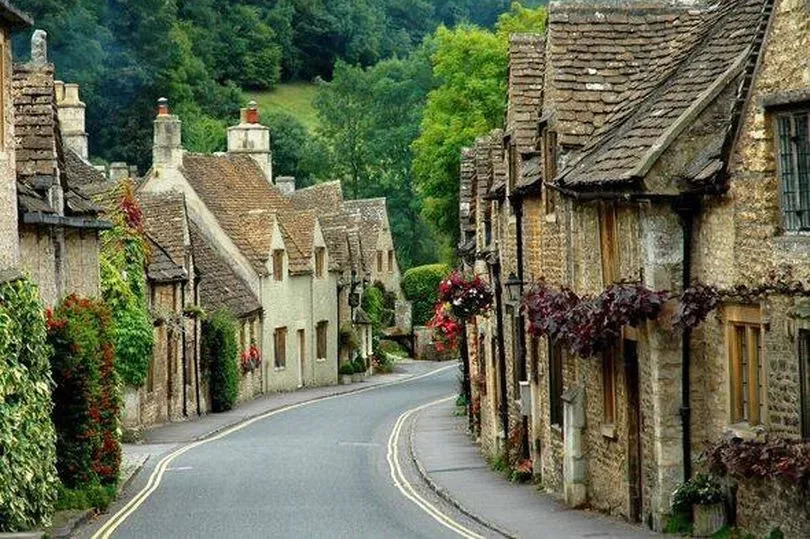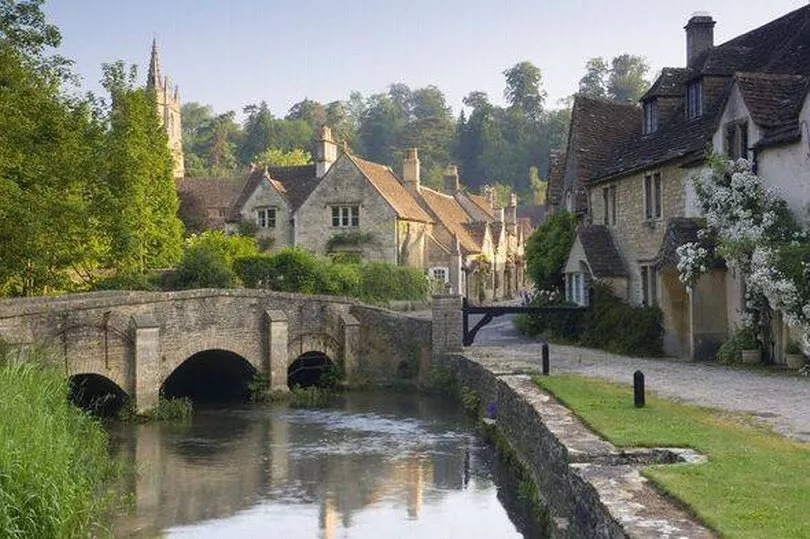A location in Wiltshire is frequently dubbed “the prettiest village in England” – a designation it has maintained for decades owing to its honey-coloured dwellings, twisting lanes and position alongside the By Brook.
Castle Combe, situated roughly 10 miles north-east of Bath, appears precisely as one might envision a quintessential English community to look.
It boasts a population of just 356, as recorded in the 2021 census, and notably, no fresh properties have been constructed in the historic heart since approximately 1600.
Consequently, the streetscape today remains largely unchanged from centuries past.
Two further factors – or more accurately, their lack – contribute to maintaining that impression, reports the Express.
In Castle Combe there are no TV aerials and no street lights.
These absent features may appear trivial, but without contemporary clutter adorning rooftops and no harsh illumination encroaching after nightfall, the location preserves an appearance that could effortlessly belong to a different era.
The settlement derives its name from the 12th-century fortress that formerly stood to the north.

Castle Combe has been used as a filming location for several movies -Credit:Getty
Only earthworks survive, but during the Middle Ages Castle Combe developed into a thriving community.
The wool industry played a crucial part, and by the 14th century a market was operating here – the 14th-century Market Cross still stands where the village’s three principal streets converge. St Andrew’s Church, with parts dating back to the 13th century, is a nearby attraction.
Inside, visitors can marvel at one of the oldest functioning clocks in the country, believed to have been constructed in the 15th century. Uniquely, this clock lacks a face and instead marks the hours with a bell.
The unspoilt charm of Castle Combe has made it a popular choice for film and television producers. Its debut on the big screen was in 1967 when Hollywood crews descended upon the village to film the musical Doctor Dolittle.
Despite production hiccups due to persistent rain and local objections to set changes, the film firmly established Castle Combe as a desirable filming location.
Since then, directors have repeatedly chosen the village as their backdrop. In Matthew Vaughn’s fantasy film Stardust (2007), the village was transformed into the fictional community of Wall.
The village streets set the scene for the start of the magical adventure starring Claire Danes, Michelle Pfeiffer and Robert De Niro.
In 2010, Castle Combe featured in The Wolfman, a gothic horror film starring Benicio Del Toro and Anthony Hopkins. The village’s medieval character and narrow lanes perfectly complemented the film’s 19th-century setting.
Perhaps its most notable appearance was in 2011 when Steven Spielberg selected Castle Combe for pivotal scenes in War Horse. The First World War drama, adapted from Michael Morpurgo’s novel, used the village to depict early-20th-century Devon.
Castle Combe, recently featured in the Apple TV+ spy drama Slow Horses starring Gary Oldman, was renamed “Upshott” for the series.
Despite its tranquil appearance, Castle Combe is home to one of the West Country’s most renowned motorsport venues, Castle Combe Circuit. Built on a former RAF airfield, it has been a hub for drivers and spectators since 1950.
The circuit hosts a variety of events, from car and bike racing to rally events and track days, drawing fans from all over the UK.
Visitors typically start their journey at the car park atop the hill before descending into the village. The bridge over the By Brook offers a quintessential postcard view – rows of stone cottages leading down to the water, framed by wooded hills.
It’s one of the Cotswolds’ most photographed locations.
In the heart of the village, you’ll find the Market Cross, St Andrew’s Church and a couple of traditional pubs. The Manor House Hotel, a grand country estate with 365 acres of gardens and a golf course, provides a luxurious option for those staying overnight.
Part of Castle Combe’s charm lies in its lack of commercialisation. There are no chain stores or large tourist shops.
Instead, locals occasionally sell cakes, flowers and sweets from outside their homes, using honesty boxes for payment.
The village’s reputation as the “prettiest in England” is supported by numerous glowing reviews from visitors. One tourist described it as “a place that feels as though it has stepped straight out of a postcard,” while another said: “Every corner looks like it’s waiting for a film crew.”
